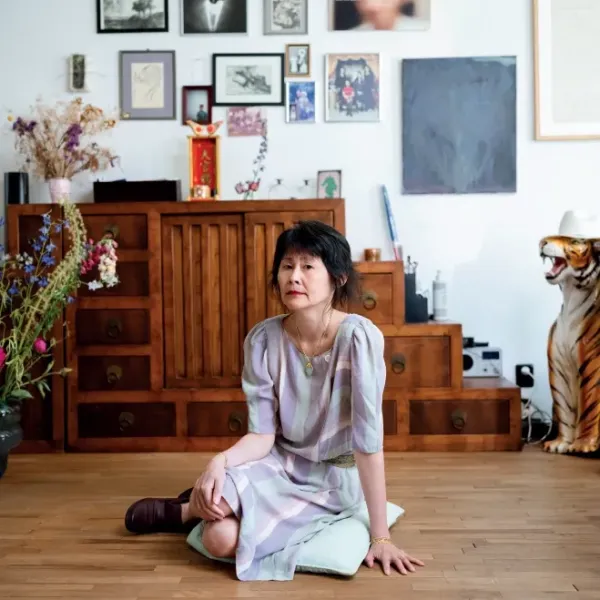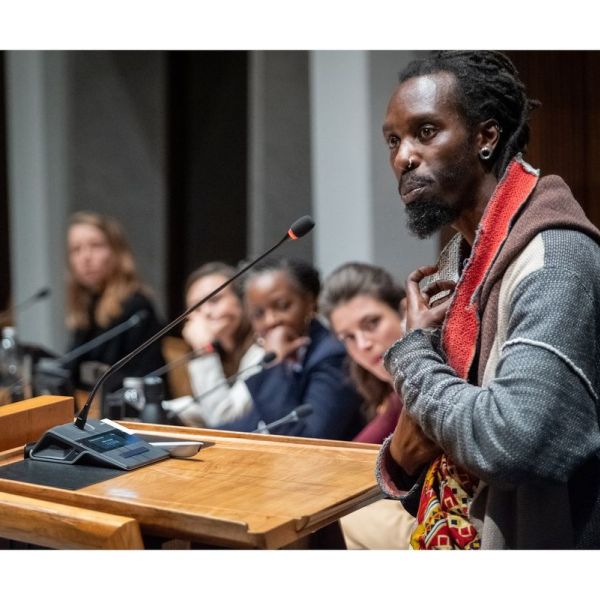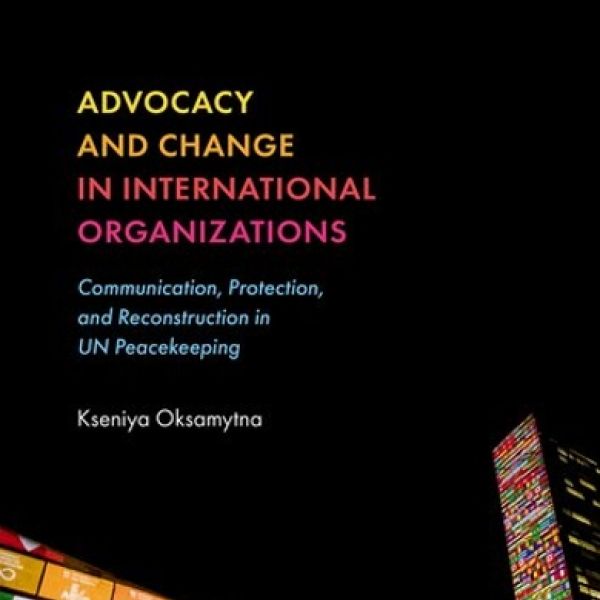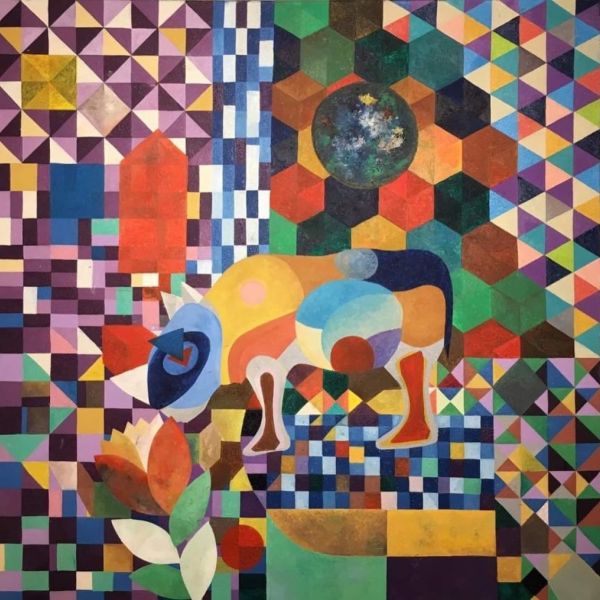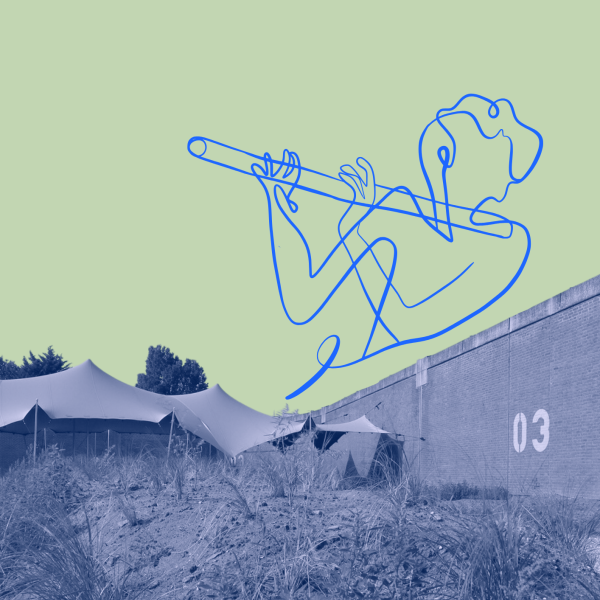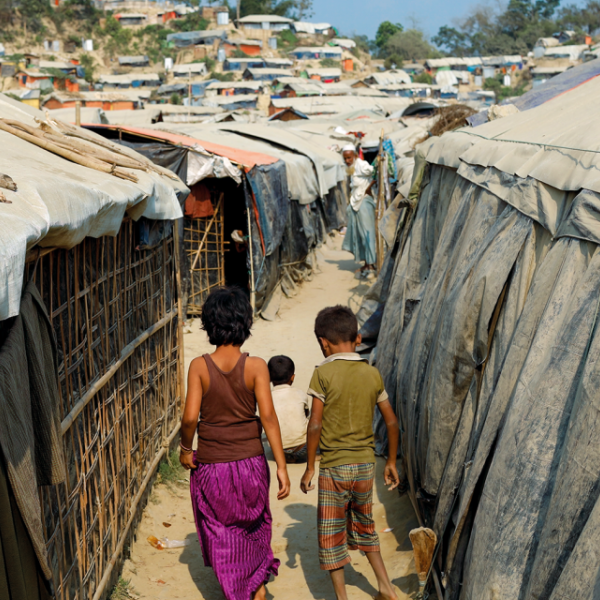Common bonds: From the Rome Conference to today, an exhibition by the ICC.
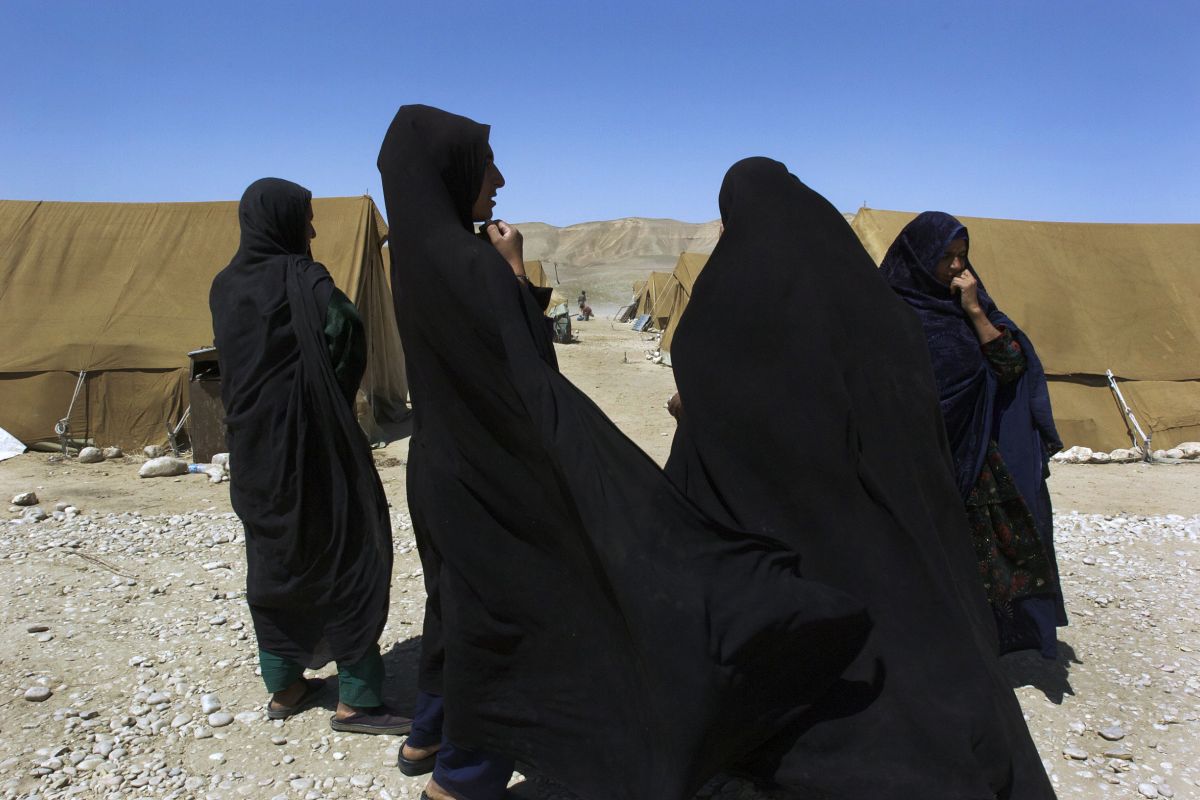
From the situation in Ukraine to the Philippines’ so-called "war on drugs", to violence that has displaced and harmed millions of people from Afghanistan, Darfur (Sudan), Venezuela and more: the International Criminal Court (ICC) is investigating in 17 situations across the globe.
Through its work, the Court hears thousands of stories from conflict survivors. This exhibition offers a glimpse into some of those stories.
Going behind-the-scenes, we interviewed ICC Public Affairs Officer, Michelle Johnson, who curated this exhibition.
You are organising this exhibition alongside the commemoration of the 25th anniversary of the adoption of the Rome Statute of the International Criminal Court, why is this such an important moment?
"Twenty-five years ago, 120 countries adopted the treaty that established the International Criminal Court. From that moment on, the Rome Statute system, which created the ICC and the Trust Fund for Victims, has been working to build a more just world. This anniversary is a moment to reflect on the work of the Court so far and its impact for survivors of mass crimes."
Waar?
Atrium Den Haag
Wanneer?
11 - 31 juli
Wat?
Verhalen van mensen uit de vier continenten waar het Internationaal Strafhof onderzoekt. Belicht enkele van de eerste ontvangers van herstelbetalingen van het ICC en mensen die worden ondersteund door het Trustfonds voor Slachtoffers.
Waarom?
Viering van de 25e verjaardag van het Statuut van Rome van het ICC, het oprichtingsverdrag van het ICC.
Could you provide some examples of the specific artworks that will be featured in the exhibition 'Common bonds'?
"The exhibition offers a glimpse into the stories of survivors from the 17 situations across 4 continents in which the Court has launched investigations.
There is a stunning image from Afghanistan of former refugee women on their way back home. You can see the dust, and almost feel the heat and the wind whipping through the refugee camp. There is so much motion in this image - the composition is gorgeous - and for me in captures this moment of people in transit, and their epic journey trying to return home."

Photo title: “Returning home” Photo: UN Photo / Eric Kanalstein
"In another image, an elderly woman from Georgia gazes down at a photograph of her former home. She told us about how her house was intentionally burned down during the 2008 conflict, and how she watched it burn. Her instinct was to lock her front door before leaving, "but then I realized there was nothing left behind it... It was then that I decided to flee," she told us."

Photo title: “They burnt my home” Photo: Pete Muller
"Finally, there is the family photo with Gervais, a local carpenter from Central African Republic. You can see the joy and love between each person in this family, it just leaps off the page. This scene is juxtaposed with Gervais' survival story: He was shot during the conflict. The bullet entered behind his ear and exited through his left eye. It's a miracle that he survived, and that this family still exists."

Photo title: “The bullet hit” Photo: Rena Effendi
What themes or issues does the exhibition aim to address regarding the aftermath of conflict?
"The stories reflect many of the crimes that the ICC addresses: murder, rape as a tool of war, using child soldiers, forcible displacement, attacks on civilian populations, attacks on cultural heritage, and more. They cover unimaginable violence, harm and loss. But they are also stories of love, friendship, family, home, connection, community and hope."
In what ways does the exhibition provide a platform for marginalized voices and underrepresented communities affected by conflict?
"Many of the stories are those we gathered directly, going to the countries and interviewing the people affected by crimes. The project aimed to be an empowering experience for those telling their stories, and to create a platform from which they could have their voices heard.
Several other stories were shared with us by partners or other international organisations. Although the people in these images often remain anonymous, we want them to know that the situations they are facing, and that they themselves, are not forgotten.
Each situation in which the ICC has launched investigations is included in this exhibition. And each story tends to focus on just one person or family; one experience of conflict. But behind each one, there are thousands more. They are all stories that deserve to be heard."
How does the exhibition foster empathy and understanding among visitors towards the experiences of conflict-affected individuals? Why is it crucial that the stories of victims are being heard, not only in court but also by a wider audience?
"By pairing a person's story with information about the related ICC investigation, I hope that the existence of the conflict, the suffering it caused, and the need for justice related to the alleged crimes becomes more tangible in viewers' minds. If someone comes to the exhibition and is more aware of a certain conflict, or if one story stands out to a viewer and stays with them for years to come, then this exhibition has been worthwhile.
Ultimately, when enough people care, and when they care enough, they take action. That can have a real impact on addressing and preventing even the most atrocious crimes."
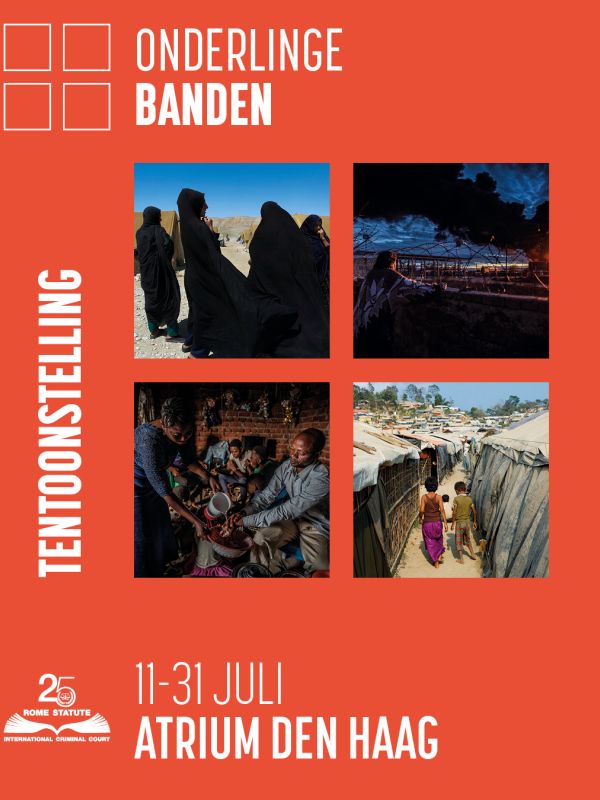
Has the exhibition collaborated with any organizations or initiatives that provide support or resources to victims of conflict?
"This exhibition is being hosted by the Assembly of States Parties, which comprises the 123 States Parties to the Rome Statute. It was produced by the ICC in collaboration with the Trust Fund for Victims, in particular for the photographs from the Democratic Republic of the Congo of TFV programmes, which include some of first ICC reparations stories to be made public in the Court's history.
The ICC is grateful for the generous support of the Ministry of Foreign Affairs of the Kingdom of the Netherlands, the Municipality of The Hague, and the European Union in producing this exhibition.
We also thank the photographers, support staff - from interpreters and translators, to fixers, coordinators, drivers, security personnel, designers, writers, lawyers, Outreach officers, and more - and organisations that made it possible to capture and document the photographs and stories in this exhibition. All of these groups, organisations and individuals are working, in different ways, to support conflict survivors and create a path to peace and justice."
How can visitors contribute to or support the cause highlighted by the exhibition even after their visit?
"Many visitors in and around The Hague have opportunities to contribute to peace and justice.
After serious reflection, if you feel you have something to contribute to this cause, promise yourself to dedicate your time and talents however you can. This could be through your work, whether paid or volunteer, or it might be by sharing information and stories, talking to your family and friends, teaching your children, sharing resources like this exhibition with teachers and schools, donating to the Trust Fund for Victims or encouraging your government support this cause. There are so many ways to get involved."
The photos and accompanying captions are for the purpose of the exhibition only. They do not represent, and are without prejudice to, the legal findings in specific cases and situations before the Court.
Visitors should be aware that the exhibition contains some strong content that may be unsettling, particularly to children. Viewer discretion is advised.
